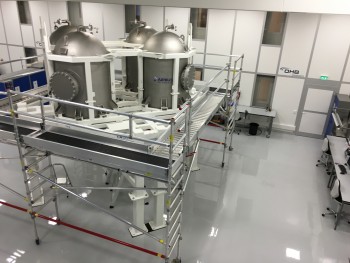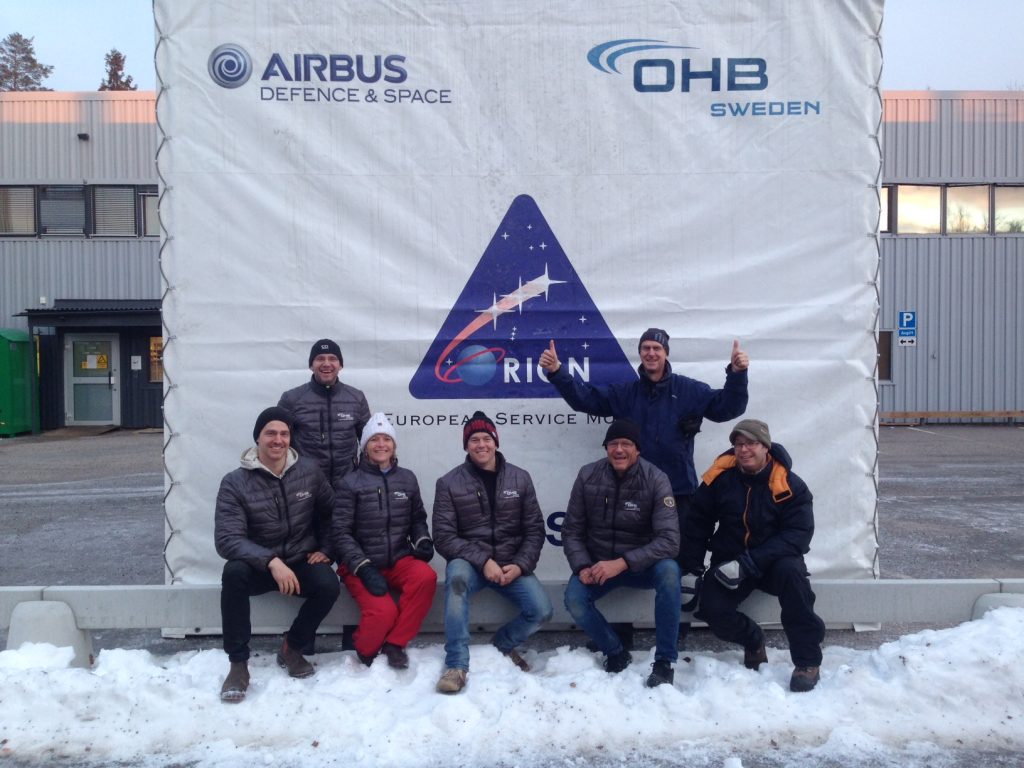
Propulsion Qualification Model (PQM), including the structure and the propellant tanks, ready for the start of integration activities at OHB Sweden.
OHB in Sweden is assembling, integrating and doing initial testing of the European Service Module Propulsion Qualification Model (PQM) that represents the propulsion system for testing purposes. It is much heavier than the final module as it will not be launched into space. It serves an important role in the development of the Orion spacecraft as it allows engineers to show that everything works as planned.
Facts about the Propulsion Qualification Model
- The Propulsion Qualification Model is made of solid steel.
- Its dimensions are 4.1m x 4.1m x 4.6m (length x width x height).
- It houses the Orion ESM propulsion subsystem consisting of:
- four stainless-steel tanks of 2000 litres each and a wall thickness of one cm.
- The tanks will hold the propellants at a pressure of 25 bar with a total capacity of nine tons.
- Other elements of the propulsion model include:
- two high-pressure helium tanks;
- pressure-control systems;
- the sensing and command system with drive electronics
- the propellant lines with shut-off valves, filters,
- engines that will propel and orient Orion.
Two types of engines totalling 21 thrusters are part of the propulsion system:
- a US Space Shuttle Orbital Maneuvering System (OMS) engine as main engine,
- eight auxiliary thrusters and 12 smaller thrusters produced by Airbus Safran Launchers Lampoldshausen, Germany.
The assembly was completed in January in Stockholm, Sweden and the model is packed up and ready for shipment to the White Sands Test Facility in New Mexico (USA).
There it will be tested extensively including “hot-firing” where the auxiliary engines will be fired for real in tests ran by Airbus DS.


 Automated Transfer Vehicle page
Automated Transfer Vehicle page ATV blog archive
ATV blog archive
Discussion: no comments